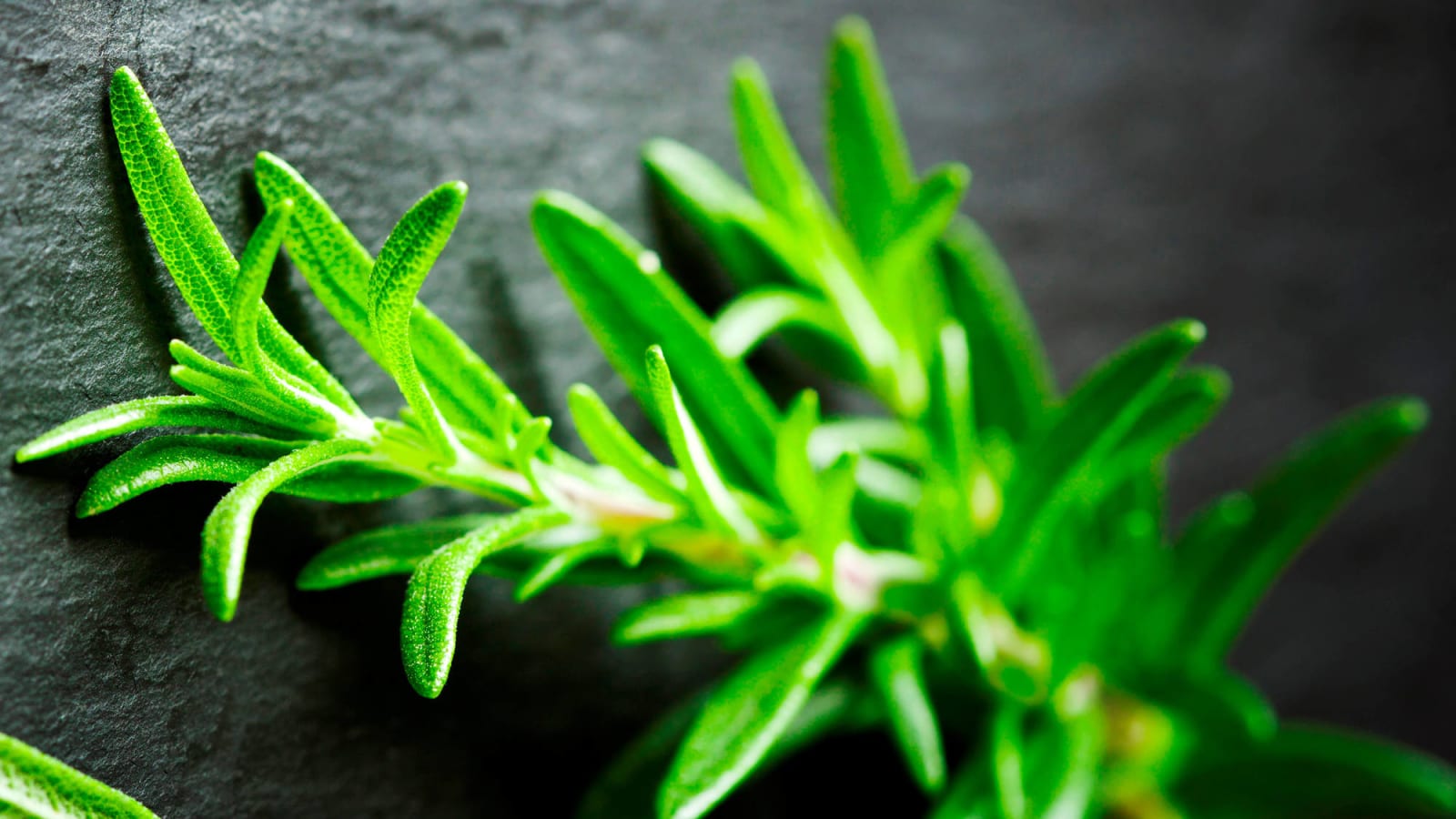If you got into gardening during the pandemic (come on, who didn’t?) you don’t have to stop just because the traditional growing season ended. In fact, numerous vegetables and herbs can be grown just as successfully indoors using either an indoor garden kit (such as an Aerogarden) or just a sturdy container, soil, and seeds. You’ll want to research the best practices for your plants, but to get you started, here are 20 herbs and veggies you can grow inside.
Smith Collection/Gado/Getty Images
Genovese, thai and other types of basil can be grown indoors via an indoor garden kit or just a pot with soil. Basil plants love warm, bright locations, so if you can’t place the pot in a sunny spot, you’ll want to spring for a light. We love the smell of fresh basil in the wintertime!
Natasha Breen/REDA&CO/Universal Images Group via Getty Images
Beets like their space, so if you’re hoping to grow a bunch of beets, be sure you have the room to space out the seeds a foot away from each other. Although beets enjoy sunlight, they also dig cool, moist environments—so the extra space in your garage, shed, or cellar is a perfect place to grow.
LOIC VENANCE/AFP via Getty Images
Growing broccoli indoors is a breeze, with as little as six hours of daily sunlight. As opposed to beets, a broccoli plant can thrive at room temp in just a three-gallon container or medium-sized bucket. You could even squeeze a couple of plants into a small space...just make sure they get enough water!
Natasha Breen/REDA&CO/Universal Images Group via Getty Images
Growing carrots indoors isn’t settling, it’s an improvement! Carrots do best in comfortable temperatures and look best in loose soil—two things that are hard to control when Mother Nature is at the helm. And for a long, skinny vegetable, carrots actually only require 12 inches of vertical space, and their seeds can be planted just two inches away from each other.
Ross Land/Getty Images
Chives are chill with six to eight hours of sunlight, six inches of soil, and the amount of humidity provided by a couple of other plants, a small pebble tray, or regular misting. You can even grow them in the kitchen and conveniently cut off what you need!
Edwin Remsburg/VW Pics via Getty Images
Cilantro is a cinch with an indoor garden kit or a small pot—preferably an unglazed terra-cotta pot with some drainage holes. Use a mixture of potting soil and sand, water thoroughly, and use fertilizer, if possible. Cilantro likes light, so aim for five or six hours of full sun daily.
May Tse/South China Morning Post via Getty Images
Indoor garden kits are great for growing dill because you’ll need a 12-inch-deep pot to go the soil route. Don’t be deterred from the latter, though, as it’s still totally doable. Dill does well at room temperature; just make sure your dill gets six hours of vitamin D (a.k.a. sunlight), plenty of fertilizer, and thorough waterings.
Natasha Breen/REDA&CO/Universal Images Group via Getty Images
Whether you’re seeking the healing properties of lavender or just the scent, this purple plant can be grown indoors during the winter. Pick a south-facing window for maximum sun exposure, but keep the plant away from heat sources so it doesn’t dry out. You should still wait for the soil to feel dry to the touch before watering, but give it a good drenching each time. You’ll also want to prune the branches for a bushier result!
Paul Aiken/Digital First Media/Boulder Daily Camera via Getty Images
Fresh lettuce can be a year-round option, even during the winter, as long as it still gets 10-12 hours of sunlight. (Pick a south-facing window for optimal sun exposure.) In our opinion, an indoor garden kit makes things easier, as they can provide all the light and water lettuce plants crave.
Shawn Patrick Ouellette/Portland Portland Press Herald via Getty Images
Mint will grow even if you don’t want it to (but you do!) If you can opt for a wider, shallow container for your growth. Then, just put the plant in the sun (pick a west-facing window in the winter for moderate exposure), give it some water, and don’t let it take over your home. Toast your eventual success with a fresh mojito!
Education Images/Universal Images Group via Getty Images
Onions are easy to grow because the various varieties are “cut-and-come-again” vegetables that grow repeatedly from the same stock. You can plant them in deep pots or even start growing them in cups of water to watch the roots expand up close! However, onions like a lot of light (at least 12 hours), so you might want to consider some artificial assistance.
DEA / M. CERRI/De Agostini via Getty Images
Plant your oregano in equal parts potting soil, sand, peat moss, and perlite with just the root ball buried and the main stems still showing. Although they like a lot of light, oregano plants are very easy to grow because they don't require fertilizer or frequent watering—only water them when the soil is dry to the touch.
Caterina Bruzzone/REDA&CO/Universal Images Group via Getty Images
Parsley is a perfect addition to your Aerogarden or other indoor garden kits, but a small container with potting soil works, too, as parsley doesn’t need much more than water and sunlight. Just keep in mind that parsley seeds take a while to germinate and the plants can grow more than two feet in height!
Hoberman Collection/Universal Images Group via Getty Images
Potatoes can be grown in a variety of ways indoors, sometimes resembling some strange experiment (no surprise that growing spuds is a classic science class activity). Potatoes are another food that can be grown from themselves—making their growth as easy as it is fascinating. Just leave some vertical room in your pot, as you’ll need to add soil to the growing plant to make sure your potatoes have enough coverage.
Caterina Bruzzone/REDA&CO/Universal Images Group via Getty Images
Rosemary isn’t the easiest herb to grow indoors, but you can be successful if you give it plenty of sunlight, water only when the soil begins to dry, and allow a fan to circulate air around the plant for a few hours each day. For a simpler approach, try growing via indoor garden kit pods.
De Agostini via Getty Images/De Agostini via Getty Images
This one’s perfect for the great indoors, as all you really need is a clay pot and some potting soil. (Or better yet: an Aerogarden!) Even in dry environments, sage can rage, so wait until the soil feels dry before adding water, and give the plants six to eight hours of sunlight. Sage is renowned for its ample antioxidants and ability to reduce inflammation, assist in digestion, and ward off evil spirits in your haunted home.
Anjelika Gretskaia/REDA&CO/Universal Images Group via Getty Images
Start with a pot that’s six to eight inches deep, plant spinach seeds half-an-inch deep and at least three to five inches apart, and in about a week you should see sprouts. Give them plenty of sunshine in the winter (and some shade in the summer), keep the indoor climate comfortable, and maintain moistness in the soil. You’ll want to mulch and fertilize the soil, too!
JOHANNES EISELE/AFP via Getty Images
Sprouts are chock full of vitamins, nutrients, and antioxidants; they make great additions to salads and sandwiches; and, thankfully, are among the easiest things to grow indoors. In fact, you can even grow them in a jar! Check out those instructions via Darn Good Veggies.
Marco Simonini/REDA&CO/Universal Images Group via Getty Images
If you’ve been keeping score at home, this entry in our list confirms it: you can, in fact, grow parsley, sage, rosemary, and thyme at home. (Someone alert Simon & Garfunkel!) This is another good one to grow using an indoor garden kit, but it’s not a necessity. Just use an easy-draining sandy soil, give it lots of light, and wait to water until the soil is totally dry.
Smith Collection/Gado/Getty Images
Probably one of the most common indoor grow projects, tomatoes aren’t hard to grow if you stick to the smaller varieties. Keep plants in the sun for at least eight hours, make sure your home temperature remains at least 65 F, and be sure to hand pollinate the plants. Or, use an indoor garden kit!

 +
+




























